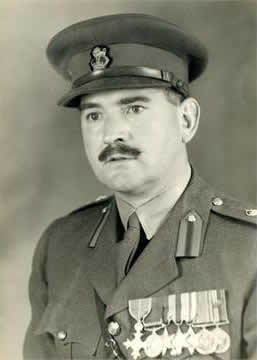
Webb’s (Figure 1) The Philatelic and Postal History of Hong Kong and the Treaty Ports of China and Japan (PPHK) has been on my purchase short-list for some time now. A few days back I saw a reprint of book on eBay but it looked, well, different. I bid and managed to bag it. Having received the book a few days back, I thought I should pen a blog post on the book as well as the man who authored it – F. W. Webb.
Francis Wynne Webb
Webb was born on 12 December 1907 in St. George’s, Bermuda, the first of perhaps four siblings. His father, Andrew Henry Webb (1873-1949), was employed with the Royal Artillery (RA). The junior Webb followed his father’s footsteps and got commissioned into RA in 1927. By 1932, Webb was aide-de-camp (ADC) to the Acting Governor of Hong Kong. Before the war, he served in Syria, Iraq, and Iran. Between 1939 and 1945, he served in France, the Western Desert, Italy, and finally Fontainebleau, where he was the Chief Administrative Officer to Field Marshall Lord Montgomery. In August 1943, was awarded the OBE (Military Division). Due to a coronary thrombosis, he was hospitalised for long, and the illness led to his early retirement in 1953.
Philatelic Career
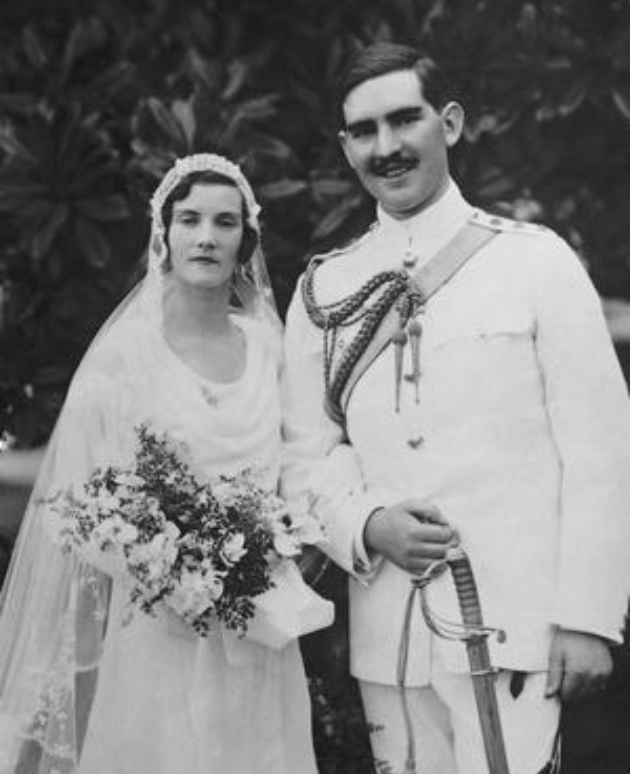
Webb’s interest in the stamps and postal history of Hong Kong may have developed when he was posted there. He probably fell in love with the place. He is known to have taken part in the annual cross-harbour swimming race from Kowloon to Hong Kong from 1930 to 1935. Further, it was on that island that he married his first wife, Enid Ida Elliot-Heywood, in 1932 (Figure 2).
In a City of London Philatelic Society’s meeting on 1 March 1948, Webb competed in and won the “Brandt” Prize for his display of the various settings of the Hong Kong 2 cents Jubilee stamp of 1891 which was accompanied with a paper describing the results of his study of this stamp. Impressing the eminent judges (Sir John Wilson, H. V. Brand, and H. R. Holmes) must have been no small feat. However, a year later in 1949, Webb disposed of his stamps.

About the time he retired in 1953, Webb started collecting once again. He decided to peruse philately seriously. He applied for and was elected as a member of The Royal Philatelic Society (RPSL) on 8 April 1954. Almost immediately, on 7 October 1954, he gave a paper and display on the 1891 issues to the Society. He became Chairman of the Hong Kong Study Circle (HKSC) in 1955. In February 1961, his pièce de résistance was published. In advance of its publication, on 10 November 1960, Webb was elected a Fellow of RPSL. On 20 June 1963, Webb was invited to join RPSL’s Council. He soon busied himself with the Society’s Publications Committee, which already had two stalwarts – John Easton and A. R. Bulter – as its members. Later in 1968, his second book Hong Kong Airmails was published by the Postal History Society (Figure 3); PPHK’s Chapter 13 on Airmails had comprised of just one page and this book was a replacement of that chapter.

Apart from Hong Kong philately, Webb was best known for his organising skills. He was instrumental in reviving the Surrey Federation of Philatelic Societies in 1958/59 and was later its President. He helped the Hong Kong Government organise the Postal Centenary Exhibition in 1962 (FIgure 4) and personally escorted the exhibit from the Royal Philatelic Collection. He was Vice Chairman of the British Philatelic Exhibition and was credited for the success of the 1968 exhibition held 16-19 October that year. At the time of his death he was the Chairman of the Permanent Executive Committee of the Philatelic Congress of Great Britain, and in which capacity, he was a strong supporter of Britain’s membership (Note 1) of the Fédération Internationale de Philatélie (FIP). Once Britain joined the FIP, he used his French language skills to develop good relations with his French counterparts (Note 2). He was RPSL’s representative on the Executive of the 1970 London International Stamp Exhibition, for which he had been appointed Chief Steward.
In the summer of 1968, while on holiday at Lyme Regis, a coastal town in West Dorset, South England, Webb had a heart attack. He recovered and returned home and then went to Osborne House (Note 3) to convalesce. He attended the exhibition on 19 October at Seymour Hall in London. He looked to be on the path to recovery but died suddenly on 30 October 1968.
For his contributions to Hong Kong philately, HKSC instituted the Webb Cup, which is still presented annually for the best research work by members of the Study Circle. First presented in 1962, Webb himself won the award in 1963! Further in 1969, the HKSC also established a trophy to be awarded annually to the author of the best literature exhibit at the British Philatelic Exhibition.
Paying tribute to the man in Stamp Collecting of 12 January 1969, Kenneth Chapman wrote:
Here, indeed, was a man to remember – as we all will.
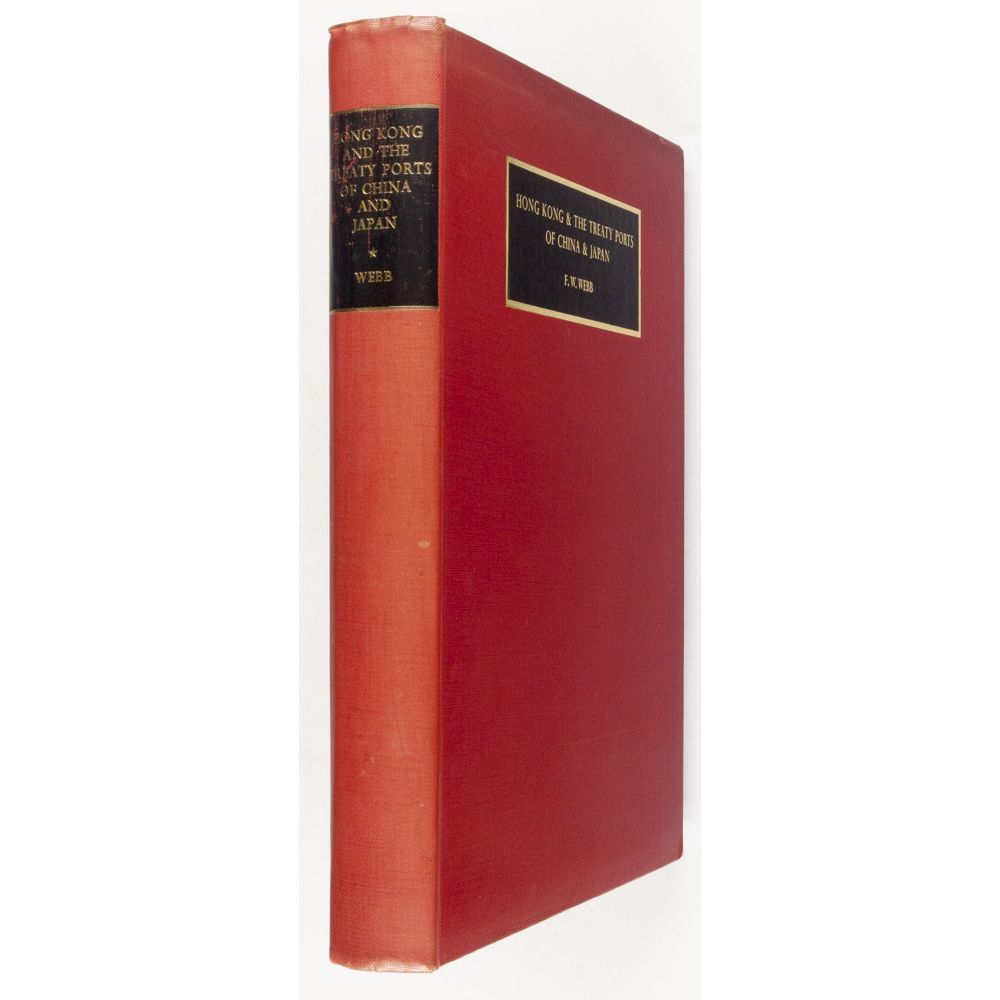
The Book

In 1951, HKSC was formed and its members started collating and publishing their findings. Sometime in the 1950s, possibly 1955, Webb started writing the definitive book on Hong Kong. He circulated draft chapters of his proposed book with the monthly bulletins of the Circle with an invitation to members to comment and amend. This collaboration helped mine lots of new information which were duly incorporated. With his military upbringing and discipline, Webb managed to complete the book of some quarter of a million words! PPHK was finally published on 16 February 1961 (Figure 5a and 5b).
As the name suggests, the scope of the work is both stamps as well as postal history / postmarks. However the bias is towards postal history with the former occupying just 76 pages while the latter is spread over more than 300.
When published, PPHK met with favourable reviews. Writing in The London Philatelist, Adrian E. Hopkins, another Hong Kong specialist, mentioned that the book had:
…a coverage of Postal History, philately, and relative scarcity which…has never been attempted in respect of any other country.
Over time PPHK become an essential reference for the Hong Kong collector; and it still is. Patrick Pearson mentioned in his Foreword to the 1991 reprint edition that,
to philatelists ‘Webb’ and ‘Hong Kong’ are synonymous
and
any Hong Kong item is referred to by its Webb reference, ‘not in Webb’ or ‘earlier than Webb’ is a regular claim.
The price of the work was 12 guineas or £12-12-0 though members of RPSL as well as the HKSC and the Postal History Society (PHS), in conjunction of whom the book was published, could pre-order the book for nine guineas or £9-9-0. 176 subscribed, most of whose names are given on page 398 of the book. The initial subscriptions helped defray, to an extent, the cost of producing the book which was over £3,500.
Unfortunately PPHK did not win the Crawford medal. Was it because it was a collaborative effort rather than one man’s output? Or was its competitor more deserving? Anyway, in its fate, it joined the company of a few other high-quality books which do not manage to receive philatelic literature’s highest award.
Bibliography
The bibliography of PPHK is given below:
Webb, F[rancis]. W[ynne]. The Philatelic and Postal History of Hong Kong and the Treaty Ports of China and Japan. London: The Royal Philatelic Society, 1961. xvi + 400 pp + (1) p; 93 plates bound in. Hard Bound in Red Buckram with gold stamping on front cover and spinel; gilt top edge. No DJ issued. Edition of 500 numbered copies.

The year of publication is printed as 1960 on the copyright page and 1961 on title page. As mentioned earlier, 1961 is correct.
Apart from the main book, a separate softbound (stapled) Scarcity and Valuation Guide of 37 pp was made available and was sold to only those who bought the book (Figure 6). The reason for not having it bound in the main book was that the latter had reached a level of permanency while the former could be revised and new editions published from time to time. Unlike the main book, it was published by the Postal History Society in a form typical of their publications of that time. This Guide is also a numbered edition of 500 copies.
The book seems to have always been in good demand. Despite a reasonable number of copies being printed, it is not seen often. And when it is, the prices touch the roof. I would value the retail price of a copy in good condition at around £200-300. The gold stamping and the black background on which it is printed, both on the front cover and spine, are especially prone to wear.
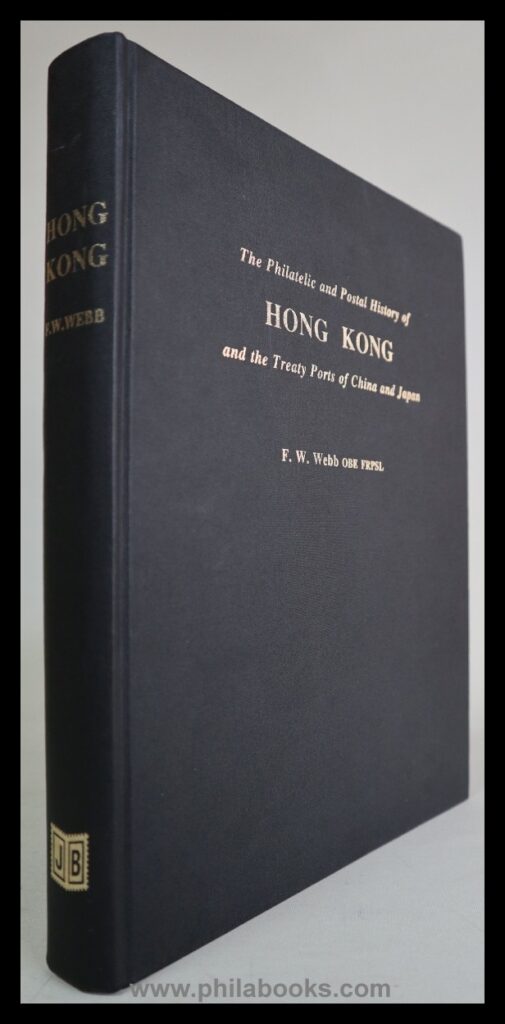
The Reprint
Due to its high prices, the book was beyond the reach of the ordinary philatelist. Hence, in 1992, with the permission of RPSL (Note 4), a reprint edition was published as Number Four in the James Bendon Philatelic Series (FIgure 7a and 7b). The reprint had, in addition to the original work, a foreword by Patrick Pearson, Past President of RPSL and former Chairman of HKSC, a bound in Scarcity Guide which was brought up to date by Pearson with the assistance of Michael Goldsmith, Chairman of HKSC, and a Supplementary Bibliography. The price was kept at £60 though members could purchase the book at a discount of 15% or £51.
The bibliography of the reprint is given below:
Webb, F[rancis]. W[ynne]. The Philatelic and Postal History of Hong Kong and the Treaty Ports of China and Japan. London: The Royal Philatelic Society, 1961. Reprint, Limassol: James Bendon, 1991; ISBN 9963762476. (1) pp + (1) p + 5 pp + (1) p + xvi + 400 pp +(1) pp + (1) p + 29 pp + (1) p + (4) pp; 93 plates bound in. Hard Bound in Black Buckram with gold stamping on front cover and spinel. No DJ issued.

As per Bendon, pages were thread sewn in signatures of eight pages (four double-size sheets). The paper used was 100 gsm semi-gloss/art matt.
The demand for the 1991 reprint seems to have been so much that a second printing was made in 1994 and a third in 2000. When reprinted in 1994 the half title page containing the words “Number Four in the James Bendon Philatelic Series” was omitted. In 2000, the words “Previously reprinted with additional information by James Bendon Ltd. in 1991 and 1994” appear on the verso of the title page (Note 5).
Unfortunately Bendon does not have the records of the numbers printed.
Further the Scarcity Guide and Supplementary Bibliography authored by Pearson was printed as a standalone publication of 40 pages in 1993 (ISBN 9963579663). The new printing lists books and articles published in the years 1991 to 1993. Finally, in 2000, the reprint has been translated into Chinese by Charles Tat Man Chan (ISBN 962860421X, 9789628604210) and a copy dedicated by the translator resides in RPSL’s library (FIgure 8).

Similar to the original book, the Bendon reprint has also become scarce and commands a price of £100-150 in the aftermarket.
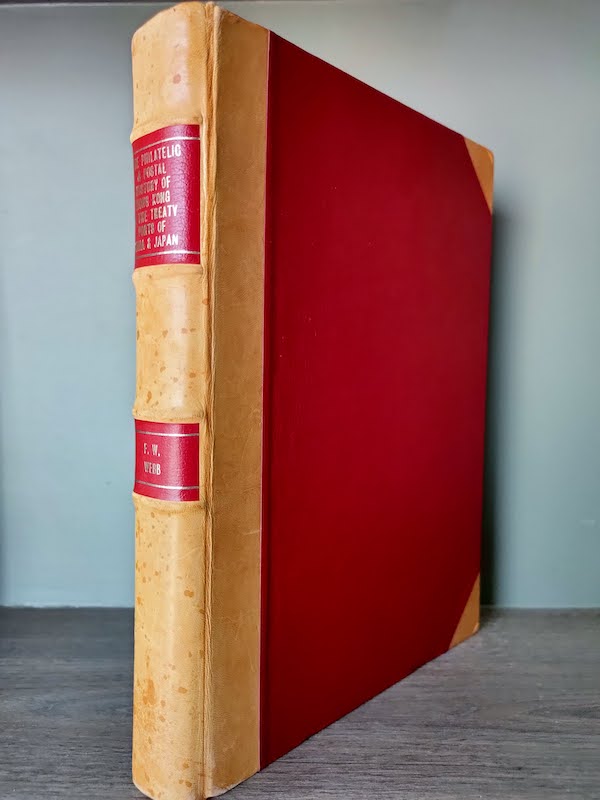
The Private Binding
Now back to the copy I bid on. Having seen the Bendon reprint in the past in black, I was surprised to see the eBay listing showing a copy bound in half leather (Figure 9). I wondered if this was some kind of an official ‘presentation’ or special deluxe edition. I wrote to James Bendon attaching some photos. He categorically refuted having published the reprint in any colour apart from black.

Nevertheless, I bid on and bought the book for a relatively small sum. It turned out to be the first First Printing from 1991. The binding is of a reasonably good quality and the pages have not been trimmed during the rebinding. A small label of the binder – JARO or Johor Area Rehabilitation Organisation – from Malaysia is stuck on the front pastedown (Figure 10). That disappointed me since it was now almost certain that the copy has been privately bound (Note 6). However the inside pages are in quite good shape and it is it is not clear why the book should have been rebound at all. Were the outer covers worn out or damaged or did someone just want to support the organisation? Or was it a private presentation copy made by a local club?
I made inquiries with JARO; that revealed that the binding is over 20 years old and most likely ordered by an individual customer and not an institiution. However JARO does not keep records that far back and could not help me with the individual’s name. Further, on reading the draft of this post, John W. Jackson informed me that the book is most likely from the library of Patrick Cassels, a North Borneo collector amongst others, who passed away on 16 November 2018. All his books were bound in the same manner in half leather and sold in a Spink North Borneo sale on 20 April 2008 (Simon Martin-Redman informs me that it was in lot 1105 – Six Books of Hong Kong and China). I would assume they were done when he lived in Borneo. This probably solves the identity of the man and the intent behind this binding viz supporting the organisation whilst also getting his books bound in an uniform way.
Acknowledgements
I thank Jan Vellakoop, Rudolf Buschhaus, and John W. Jackson for going through the draft of the initial post and for their comments and suggestions.
Notes
Note 1: While the FIP was founded on 18 June 1926, Britain joined it only in 1964.
Note 2: The FIP President at that time was Lucien Berthelot of France who presided from 1955-1971. The first eight Presidents were all Europeans until D. N. Jatia of India was elected as President in 1990.
Note 3: Osborne House was a former royal residence of Queen Victoria and is located in East Cowes, Isle of Wight. After being presented to the state by King Edward VII, a section of the house was used as a convalescent home for officers, including those retired, of the British armed forces.
Note 4: A royalty was payable by James Bendon to the RPSL.
Note 5: The fact about the 1994 reprint is heard from Burkhard Schneider. The words “Number Four in the James Bendon Philatelic Series” may have been removed since Bendon had published many more books in the interim. The details of the 2000 reprint is from the David Straight Memorial Philatelic Union Catalog hosted by American Philatelic Research Library (APRL).

Note 6: Rudolf Buschhaus of Germany informs me that he has a couple of books bound in the same fashion with the same label stuck inside. These are formerly from the Bath Philatelic Library.
References
- Gerrish, Ewart. “Obituary: Col. Francis Wynne Webb, O.B.E.” The London Philatelist 77 no. 912 (December 1968): 241. The author’s name is mentioned as E.G. and I have deduced it to be Ewart Gerrish, a member of the Council.
- Hopkins, Adrian E. “The Philatelic and Postal History of Hong Kong and the Treaty Ports of China and Japan.” The London Philatelist 70 no. 818 (February 1991): 21-22
- Jhingan, Savita, and Madhukar Jhingan, eds. D N Jatia Felicitations Function. Commemorative Volume. New Delhi: Prof V. K. Gupta on behalf of D N Jatia Felicitations Function Organising Committee, 1991
- Lowe, Robson. “The Last Post.” The Philatelist 35 no. 3 while no. 526 (December 1968): 69.
- Webb, F. W. The Philatelic and Postal History of Hong Kong and the Treaty Ports of China and Japan. Reprint Edition. Limassol: James Bendin, 1991.
- The Cobbold Family Tree. https://family-tree.cobboldfht.com/people/view/8859. Accessed 8 December 2020.
- Hong Kong Study Circle. http://www.hongkongstudycircle.com/awards/WebbCup.htm. Accessed 8 December 2020.




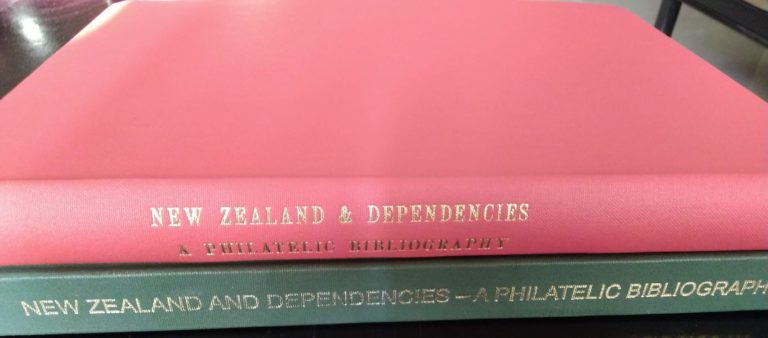

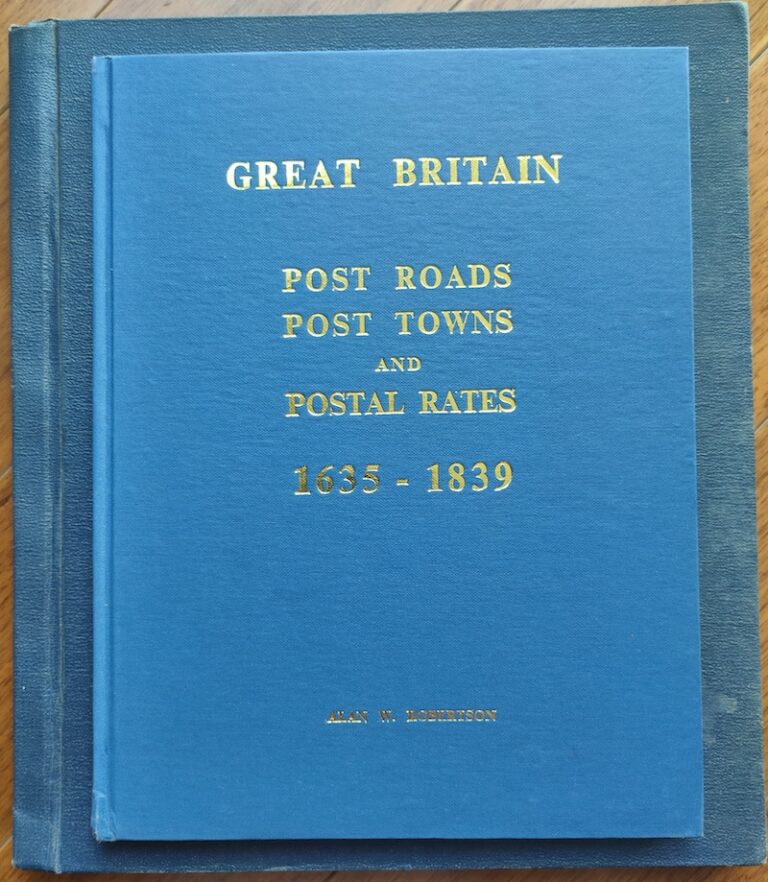

A very thorough and very interesting review. The biography of Webb well done. The video of Hong Kong in the 1930s a very nice addition.